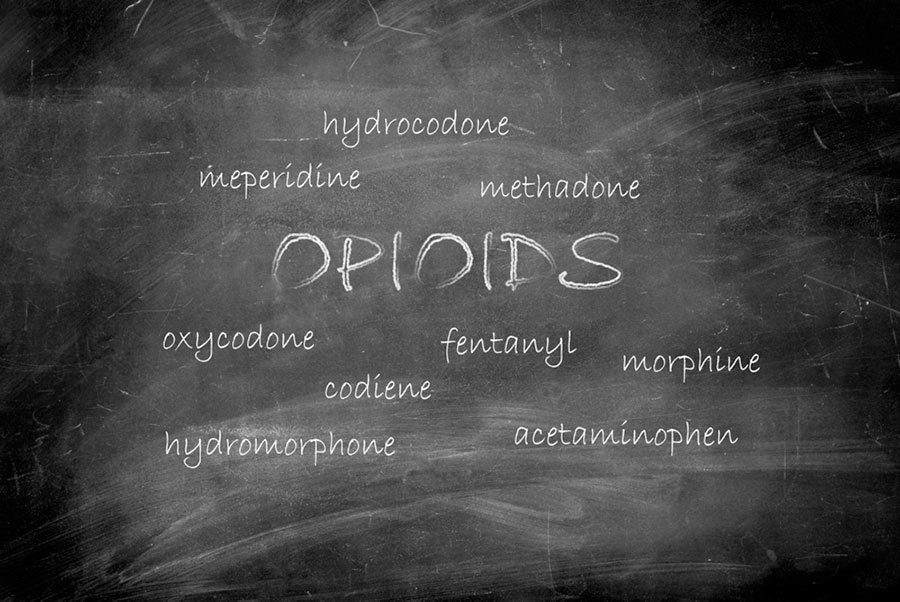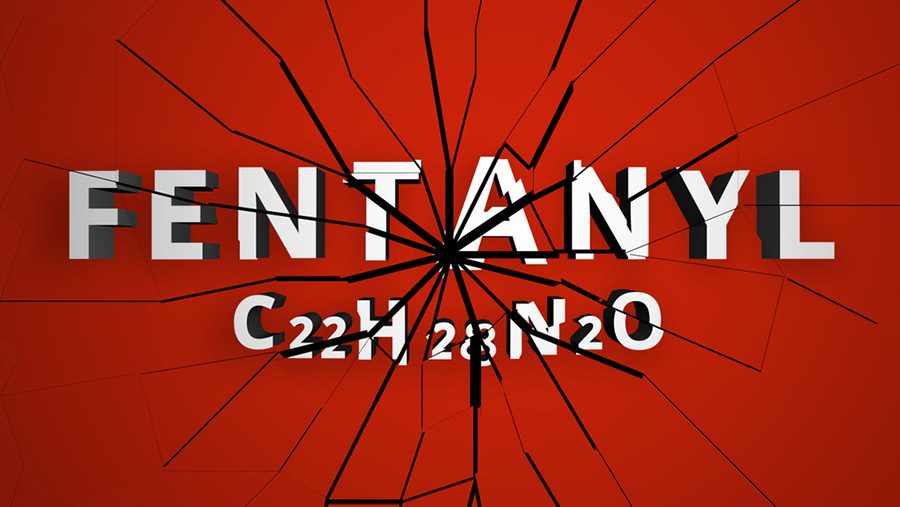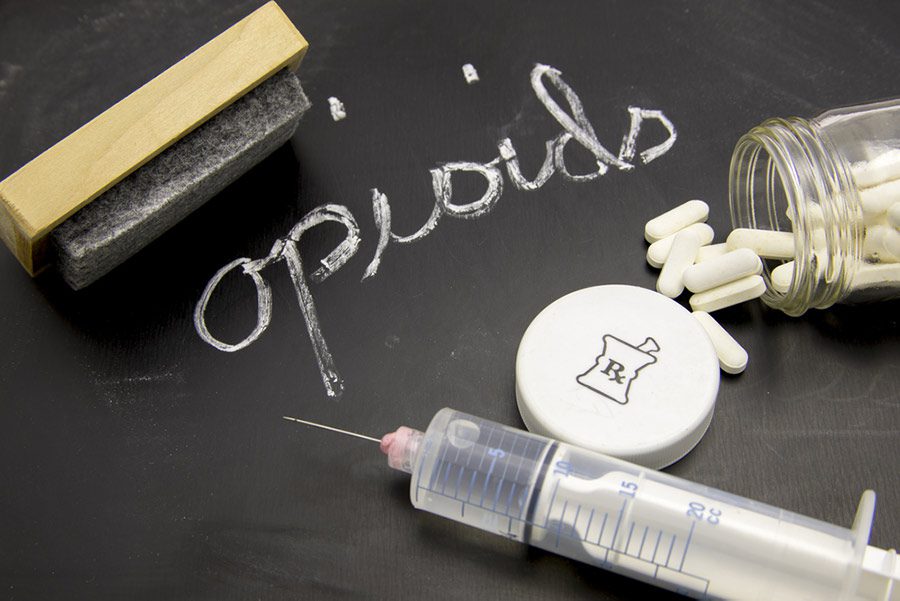7 Reasons To Seek Addiction Treatment
Substance use disorder, which is more colloquially known as drug addiction, is a serious mental...
toll free: 844.955.3042
local tel: 561.464.6505
fax: 561.450.6637
info@recointensive.com
RECO Intensive
140 NE 4th Avenue
Delray Beach, FL 33483
With annual opioid overdose deaths in America now having exceeded a hundred thousand, it’s hard to overstate the danger of synthetic opioids like fentanyl. Though heroin and morphine, made from the opium poppy plant, are plenty dangerous in and of themselves, stronger opioid drugs manufactured by laboratory personnel have proven responsible for even more overdose deaths.
Fentanyl is the most prevalent of these synthetic opioids, though even stronger drugs like carfentanil have now started to appear. Numerically, synthetic opioids like those found in fentanyl patches were involved in a shocking 64 percent of all drug overdose deaths, which, according to recent data from the Center for Disease Control, occurred at a higher rate than they have ever been before over the last harrowing year.
Up to a hundred times more powerful than morphine, prescription fentanyl is only used to treat patients who are tolerant to other opioids and who are in incredibly severe pain, such as end stage cancer pain. Fentanyl can also be used similarly to morphine and related compounds in the treatment of chronic pain, though the risk of drug addiction that long term fentanyl treatment poses should not be understated.
As a schedule II controlled substance, prescription fentanyl is tightly regulated, and selling or distributing fentanyl is a serious crime. However, illegal fentanyl is increasingly being imported from abroad and infiltrating the United States’ drug supply, as not only other opioids but entirely different street drugs like cocaine have been found to contain traces of the synthetic opioid.


This gives these other drugs more of a “kick,” making it an attractive option to drug dealers who seek to sell a drug that will give their customers a strong “high.” However, when drug dealers sell drugs laced with fentanyl to an unsuspecting customer, the risk of overdose can be incredibly high because the lethal dose of fentanyl is so much lower than that of even a drug like morphine.
Only two milligrams of fentanyl may constitute a lethal dose, ten times less than the amount of heroin or morphine that would pose the same risk of serious harm. Because fentanyl can be absorbed through a person’s skin, they may not even have to take the drug to be at risk of overdose, making the transdermal patch form of fentanyl a particularly dangerous version of the drug.
You can continue reading to learn more about what a transdermal patch is, how fentanyl patches work, how to recognize an overdose on opioids, and how you or a loved one can get treatment for fentanyl addiction and for other drug problems.
Like other opioid drugs, fentanyl works primarily through its effects on the brain and body’s opioid receptors, mimicking the chemical structure of our body’s own endogenous opioids. By bonding to these opioid receptors, opioid analgesics like fentanyl provide pain relief by blocking the body’s pain messages from getting through to the brain.
Fentanyl also triggers the release of endorphins, creating a sensation of pleasure that writer Maia Szalavitz described in a recent New York Times piece as feeling like “warm, buttery love.” This makes the enveloping fentanyl high incredibly attractive to anyone struggling with mental health issues that interfere with their ability to regulate their emotions.
However, over time, prescription opioids like fentanyl affect the brain’s opioid receptors and cause them to become less sensitive, which is when a tolerance to fentanyl and other opioids can begin to develop.
Fentanyl tolerance will result in a patient needing to take more and more fentanyl to relieve pain, or, in someone who has been using the synthetic opioids like fentanyl recreationally, they will need more and more fentanyl to be able to feel the same effects and the same “high” that they are used to.
Fentanyl addiction develops when a person’s brain chemistry becomes so dependent on fentanyl that they begin to need fentanyl just to feel normal. They will also likely feel painful withdrawal symptoms whenever they are not taking fentanyl.
Unfortunately, adverse effects like drowsiness, difficulty urinating, constipation, altered mental state, and, in the case of overdose, difficulty breathing, are also associated with fentanyl use or fentanyl abuse.
Fentanyl patches are one of the most common ways that fentanyl is prescribed for pain relief, though fentanyl can also be sold as a lozenge or in nasal sprays, or pressed into counterfeit pills. However, a fentanyl transdermal patch works by administering the drug directly into a person’s system through their skin, which has the advantage of being a longer lasting and faster way to administer fentanyl.


A fentanyl patch should only be applied exactly as often as prescribed, as taking more patches than necessary could be very dangerous. Additionally, you should not use a fentanyl transdermal patch while also utilizing heating pads in the area of your body you plan to apply fentanyl, or otherwise let a fentanyl transdermal patch have any contact with extreme heat. This could cause too much fentanyl to be released from the transdermal patch at once, potentially causing a fentanyl overdose.
However, if a fentanyl transdermal patch falls off, you can replace it with a new patch. Then, you should promptly dispose of the old patch, since even a used patch may contain trace amounts of fentanyl that could affect others. Fentanyl patches should also be applied immediately after the protective liner is removed rather than handled by anyone who has not been prescribed the transdermal patch.
A transdermal patch can be placed on a patient’s chest, back, waist, or upper arms. Along with the usual side effects of synthetic opioid use one might expect to experience while using fentanyl, skin irritation may also occur with the use of a fentanyl transdermal patch. If you ever observe signs of a fentanyl overdose, which are described below you should immediately remove the fentanyl transdermal patch and seek medical attention.
Unfortunately, fentanyl’s potency means that it poses an incredibly high risk of overdose. The risk of fentanyl is even higher if patients have combined fentanyl with other drugs, particularly other drugs like muscle relaxants that can worsen the respiratory depression associated with fentanyl overdose.


If you witness the following symptoms in someone who has been using or abusing opioids like fentanyl or morphine, you should seek help from healthcare professionals immediately:
If these symptoms present in a setting where medical treatment is not readily available, you may still be able to step in and help the fentanyl user. If you have access to it, you should immediately administer naloxone, a drug that can reverse the effects of fentanyl that usually comes in the form of a nasal spray.
Because of the strength of fentanyl, you should also note that a first dose of naloxone may not be enough to fully reverse a fentanyl overdose, so you should continue to monitor the person you suspect has overdosed on fentanyl for as long as possible, especially if they still show any signs of fentanyl intoxication or attempting to resume their fentanyl use.
If you do not have access to naloxone and a person has stopped breathing after taking fentanyl, you may be able to revive them through rescue breathing or CPR as you wait for treatment personnel to arrive.
Ideally, you should stay with the person until they have fully recovered from their fentanyl intoxication or you have found someone else who can monitor them. However, if you do have to leave someone who you suspect has overdosed on fentanyl, you should first place them in a specific lying position called the recovery position.
The fentanyl user should be placed on their side with their mouth facing downward and their hand supporting their head, leaving their airway clear. Their leg should also be placed on the floor like a kickstand to prevent the fentanyl user from rolling over onto their stomach, a position in which they could face a greater risk of suffocating or choking.
Though the withdrawal symptoms associated with detoxing from fentanyl and other opioids are known to be incredibly unpleasant, they are not often physically dangerous, besides in rare cases of dehydration associated with extreme vomiting or diarrhea. However, detoxing in a treatment center is often recommended for opioid drugs like fentanyl to prevent the patient from relapsing during this difficult period.
Proper medical help and appropriate medication can also make fentanyl withdrawal symptoms significantly more bearable. For patients who have made it through acute detox, other medications like the Vivitrol shots we offer can help patients to maintain their sobriety by reducing cravings for drugs or making drug abuse less rewarding.
Because of the proliferation of fentanyl, opioid addiction has never been as dangerous as it is today. However, with proper treatment, many patients are able to put fentanyl and other drug use behind them for good and to move on to a satisfying life in recovery.


At Reco Intensive, we can help our clients to address any underlying mental health issues that may be fueling their substance use disorder, and to learn coping mechanisms that they can use instead of resorting to drug abuse to cope with negative feelings.
To do so, we combine scientifically backed behavioral therapies with educational programming about recovery from drug use and programming aimed at helping patients find holistic healing and wellness. Reco Intensive is also a certified provider with the Department of Health and Human Services and holds many additional accreditations qualifying us to address fentanyl addiction.
Our treatment options include an immersive partial hospitalization program as well as other intensive outpatient treatment programs which can help our patients break free of their dependence on even a drug as powerful as fentanyl and get back on the road to a bright and drug free future.
If you or someone you love is currently struggling with addiction to fentanyl or any other drug, you can call us anytime at 844-955-3042 or contact us online here to learn more about fentanyl drug treatment at Reco Intensive.